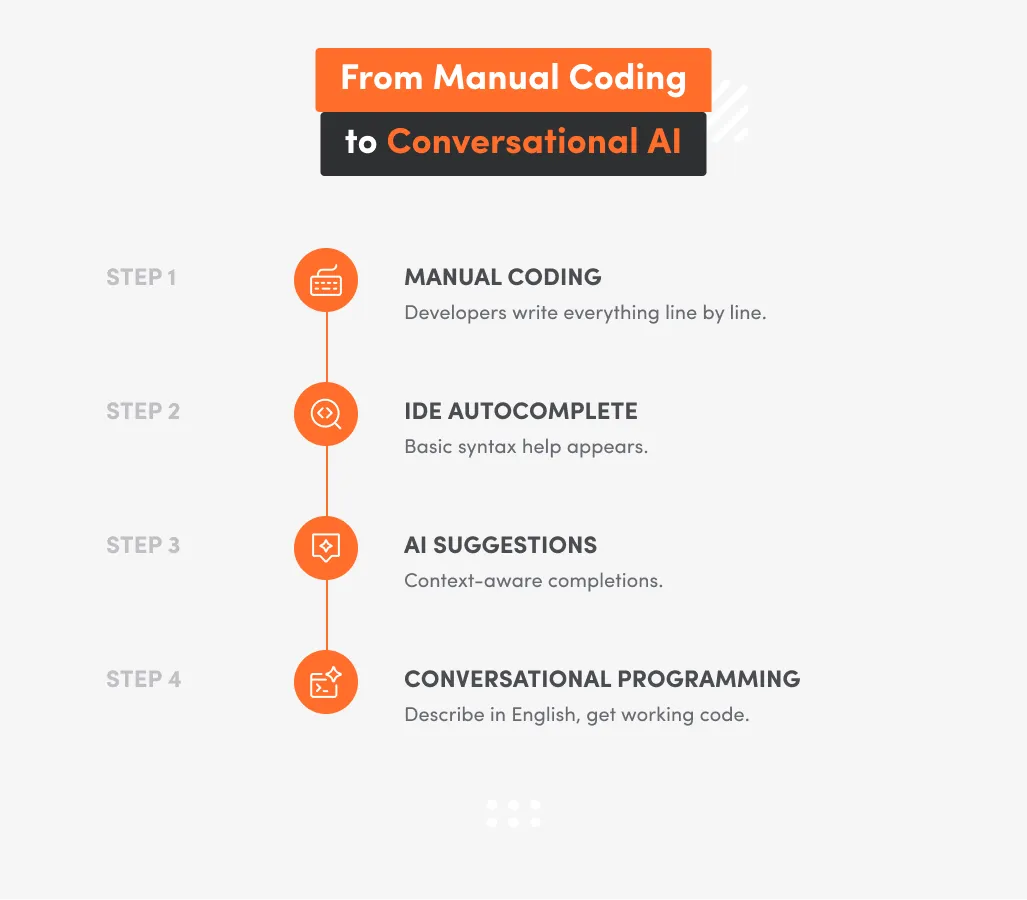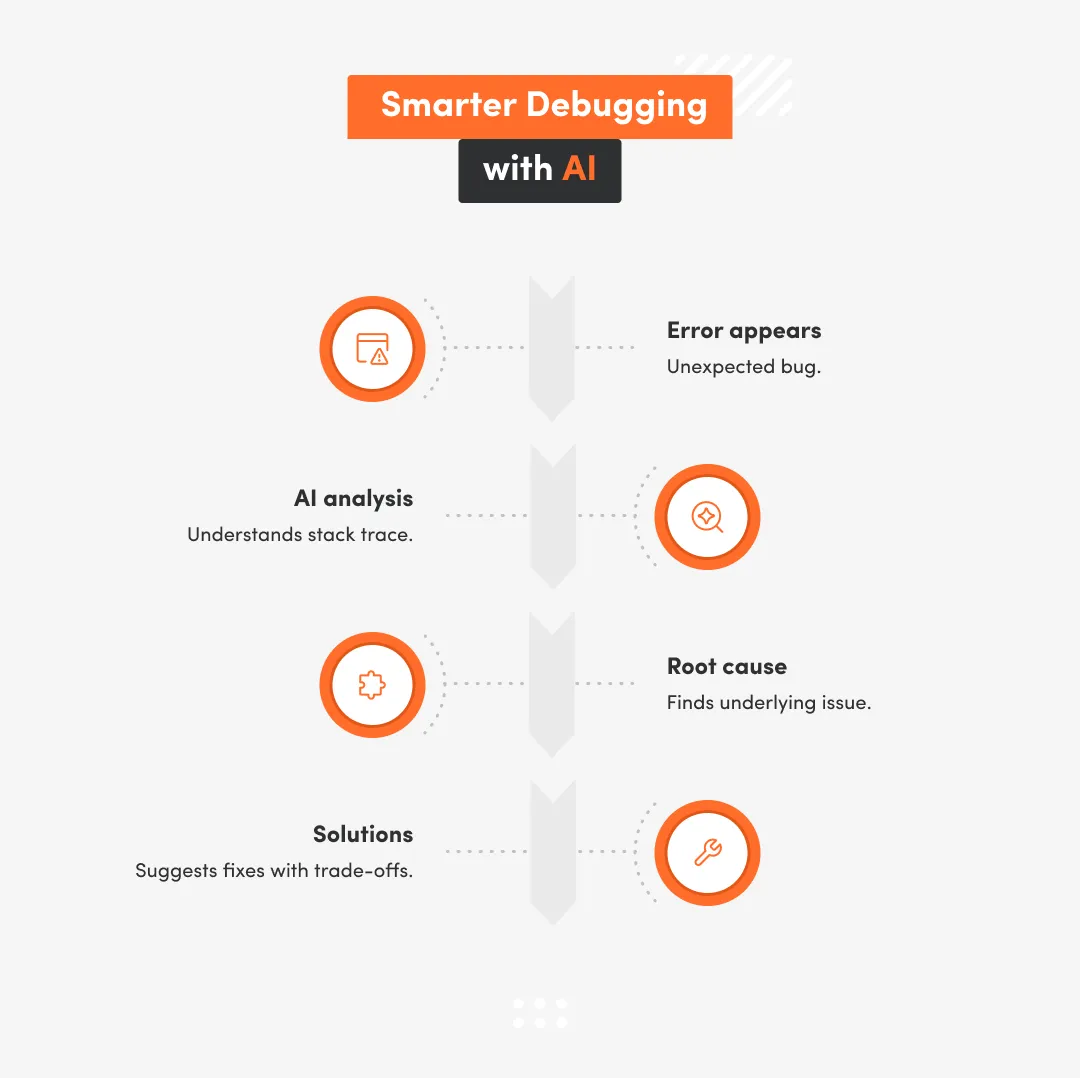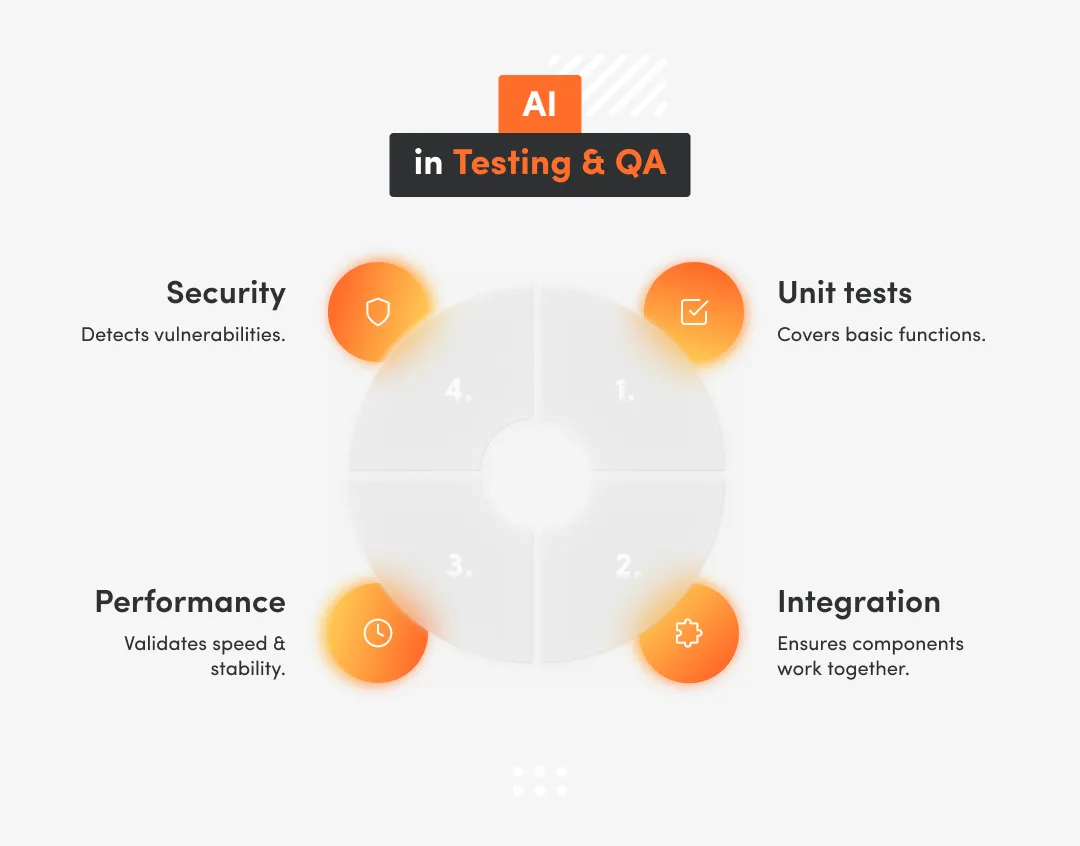The software development landscape is experiencing an unprecedented revolution driven by Large Language Models (LLMs). These advanced AI systems are fundamentally changing how developers approach coding, debugging, testing, and project management, enhancing productivity while making programming more accessible across all skill levels.
LLMs are enabling entirely new development paradigms where natural language descriptions can be converted into working code, debugging becomes conversational, and documentation writes itself. As organizations worldwide adopt these technologies, understanding their impact becomes crucial for developers, technical leaders, and businesses seeking competitive advantage in an increasingly AI-driven market.
The Evolution from Traditional to AI-Assisted Development
Traditional software development relied heavily on manual coding, extensive documentation searches, and time-consuming debugging processes. Developers spent significant portions of their time writing boilerplate code, searching through documentation, and troubleshooting common issues that had been solved countless times before. LLMs represent a quantum leap beyond conventional development tools. Unlike traditional IDEs that offered basic syntax highlighting and simple autocomplete, modern AI-powered development environments understand context, reasoning about code structure and intent.
These systems can:
- Generate complete functions from natural language descriptions,
- Provide intelligent debugging assistance that goes beyond simple error message interpretation,
- Create comprehensive documentation automatically from existing code.

The training process for development-focused LLMs involves exposure to millions of code repositories, technical documentation, and programming discussions. This extensive training enables them to understand not just syntax, but programming patterns, best practices, and the reasoning behind different implementation approaches. Modern developers can now engage in conversational programming, describing their intentions in plain English and receiving working implementations. This shift is making programming more intuitive while enabling experienced developers to work at unprecedented speeds.
Automated Code Generation and Intelligent Completion
Code generation represents one of the most immediately visible impacts of LLMs on software development. These systems can produce everything from simple utility functions to complex algorithm implementations, complete API integrations, and entire application components. The sophistication of modern code generation extends far beyond basic templates. LLMs can analyze project context, understand existing code patterns, and generate implementations that seamlessly integrate with established architectures.

Key capabilities include:
- Multi-language code generation with appropriate idioms and conventions,
- Context-aware suggestions that consider the broader codebase structure,
- Automatic generation of error handling, logging, and edge case management,
- Creation of test cases alongside implementation code,
- Real-time adaptation to different frameworks and libraries.
Intelligent code completion has evolved from simple keyword matching to predictive programming assistance. Modern systems can anticipate developer intent, suggest entire code blocks, and provide implementations that follow established patterns and best practices. The integration of these capabilities into popular development environments means developers can access AI assistance without changing their established workflows. Modern IDEs now feature seamless AI-powered features that work alongside traditional development tools, enhancing rather than replacing familiar processes.
Quality considerations remain paramount. While LLM-generated code often demonstrates impressive quality and adherence to conventions, development teams must establish appropriate review processes to ensure generated code meets project standards and requirements.
Try our developers.
Free for 2 weeks.
No risk. Just results. Get a feel for our process, speed, and quality — work with our developers for a trial sprint and see why global companies choose Selleo.
Revolutionary Debugging and Error Resolution
Debugging, traditionally one of the most challenging and time-consuming aspects of development, is being transformed through intelligent error analysis and resolution assistance. LLMs can interpret complex error messages, analyze stack traces, and provide sophisticated insights into potential causes and solutions.
Modern AI debugging assistance can trace through complex execution paths to identify root causes, analyze code patterns to detect potential issues before they manifest as runtime errors, and suggest multiple solution approaches with detailed explanations of trade-offs. The diagnostic capabilities extend to proactive issue detection, analyzing code for potential race conditions, memory leaks, security vulnerabilities, and logical errors that might not immediately cause visible problems but could lead to production issues.

Interactive debugging represents an emerging paradigm where developers can engage in dialogue about problems, describing symptoms and receiving tailored guidance throughout the troubleshooting process. This conversational approach is particularly effective for complex or unusual issues that don't fit standard patterns. Root cause analysis becomes more systematic and thorough with AI assistance, leveraging comprehensive analysis that considers multiple potential causes and suggests systematic approaches to problem resolution.
Intelligent Documentation and Knowledge Management
Technical documentation generation and maintenance, long considered essential but tedious work, is experiencing dramatic improvement through automated systems that can create comprehensive, accurate, and consistently formatted documentation from existing code and project artifacts.
Automated documentation generation now encompasses:
- Comprehensive API documentation with usage examples and best practices,
- Code commenting that explains complex algorithms and implementation decisions,
- Architecture diagrams and system overview documentation,
- Tutorial and getting-started guides for new team members,
- Troubleshooting guides based on common issues and resolutions.
The consistency and quality of generated documentation often exceed manually written alternatives. LLMs can ensure uniform formatting, consistent terminology, and appropriate detail levels throughout large projects, while maintaining accuracy as code evolves. Living documentation that automatically updates with code changes addresses the perennial problem of outdated documentation. AI systems can detect changes and update relevant documentation sections, ensuring information remains current and useful throughout development lifecycles.

Knowledge extraction from existing codebases allows teams to capture and document implicit knowledge embedded in code structures, naming conventions, and implementation patterns. This extracted knowledge becomes valuable for onboarding, code reviews, and maintaining institutional understanding of complex systems. The searchability and organization of technical knowledge improve dramatically with AI-powered systems that can categorize, tag, and cross-reference documentation automatically, making information discovery more efficient for development teams.
Advanced Testing and Quality Assurance
Testing methodologies are being revolutionized through AI systems that can generate comprehensive test suites, identify edge cases that human developers might overlook, and create sophisticated testing scenarios that improve overall software quality and reliability.

Automated test generation capabilities encompass unit tests, integration scenarios, performance validation, security testing, and regression suites. These systems analyze code logic and generate test cases for unusual inputs and boundary conditions that might not be immediately obvious to developers, often revealing potential issues that would otherwise only surface in production environments.
AI-enhanced property-based testing approaches generate properties and invariants that code should maintain, providing mathematical guarantees about code behavior rather than just testing specific examples. Code review assistance through AI analysis can identify potential issues and verify adherence to coding standards before human reviewers examine changes, making human code reviews more focused and effective.
Architecture Design and System Planning
LLMs are expanding their influence beyond code generation into high-level system design, architectural decision support, and strategic technology planning. These capabilities are transforming how developers and architects approach complex system design challenges.
Architectural guidance encompasses design pattern recognition, system decomposition strategies for microservices and distributed architectures, technology stack evaluation, scalability analysis, and security architecture guidance. AI analysis can identify appropriate service boundaries, suggest communication patterns, and recommend data management strategies that help teams design systems that are both functionally appropriate and operationally manageable. Technology selection decisions benefit from comprehensive analysis that considers project requirements, team expertise, performance constraints, and long-term maintenance considerations. Performance and scalability planning utilize predictive analysis to identify potential bottlenecks and suggest optimization strategies needed to support anticipated growth patterns.
Security considerations are integrated throughout the architectural design process, with AI systems identifying potential vulnerabilities, recommending security patterns, and suggesting defensive strategies appropriate for different types of systems and threat models.
Impact on Team Collaboration and Workflow
The integration of AI assistance into development workflows is changing how teams collaborate, share knowledge, and maintain collective understanding of complex projects. These changes extend beyond individual productivity to encompass team dynamics and organizational processes.
Enhanced collaboration manifests through improved code explanation and knowledge transfer capabilities, cross-language collaboration support, automated code review processes, and better documentation maintenance. Knowledge transfer becomes particularly efficient when AI systems provide detailed explanations of complex code sections, helping team members understand unfamiliar parts of codebases more quickly and facilitating smoother onboarding processes. Cross-technology collaboration is enhanced by AI systems that translate concepts and implementations between different programming languages and frameworks, enabling team members with diverse expertise to work together more effectively. Pair programming with AI represents an emerging collaborative paradigm where developers work alongside AI assistants, combining human creativity with AI capabilities for rapid problem-solving and implementation.

Project management integration allows AI systems to generate status reports, analyze development velocity, and maintain comprehensive project documentation throughout development lifecycles, helping teams track progress and identify potential issues early in the development process.
The Future Landscape of Software Development
The continued evolution of LLMs promises even more dramatic changes in how software is conceived, developed, and maintained. Emerging trends point toward increasingly sophisticated AI assistance that may fundamentally alter the nature of programming work.

Future developments are likely to encompass natural language programming interfaces that allow non-programmers to create software, automated system maintenance and self-healing applications, and predictive development that anticipates problems before they occur. The democratization of programming through natural language interfaces may enable broader participation in software creation, potentially changing who can contribute to technology development and how technical teams are structured. Automated maintenance and optimization represent possibilities for systems that can monitor their own performance, identify optimization opportunities, and implement improvements with minimal human intervention. As these technologies mature, the distinction between AI assistance and human development may become increasingly blurred, leading to new forms of human-AI collaboration that leverage the strengths of both approaches.
The transformation of software development through Large Language Models represents one of the most significant shifts in programming methodology since the advent of high-level programming languages. Organizations and developers who understand and adapt to these changes will be best positioned to thrive in the AI-enhanced future of software development.





